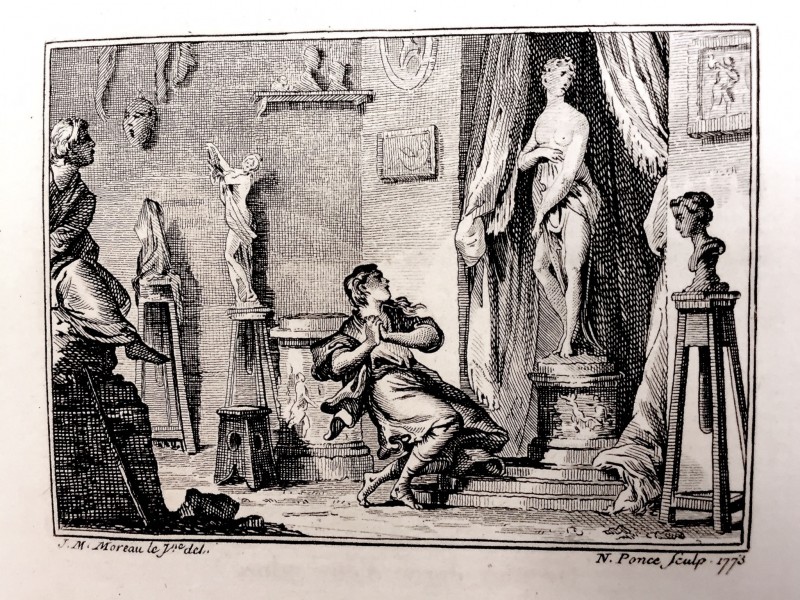Rousseau’s Lyric Scene Pygmalion

The ‘scène lyrique’ Pygmalion by Jean-Jacques Rousseau (1712-1778) – often described as the first melodrama – was written in 1762 and first performed in 1770, at the city hall of Lyon. The Ovidian myth about the Greek sculptor Pygmalion who falls in love with one of his own statues, which then comes to life, was popular on the 18th-century stage, but Rousseau’s version of the story created a sensation at the time of its premiere. With this unusual little piece for two actors and a small orchestra, the author wanted to create a new type of musical drama that moved the hearts of the audience more than the contemporary French operas did, in his opinion. In Pygmalion, therefore, the text is spoken rather than sung, but the silent stage action is accompanied by instrumental music. The brief orchestral interludes, which mirror the actors’ every movement and express their inner sentiments, were composed under Rousseau’s supervision by the amateur composer Horace Coignet (1735-1821), a resident of Lyon. Coignet’s score, considered lost for many years, was rediscovered in 1995, which has made it possible to perform Pygmalion the way Rousseau envisioned.
Image: Engraving by Jean Michel Moreau le jeune (1741-1814), “[Pygmalion, struck by Galathée’s beauty]” c. 1773, published in Pygmalion de M. J.J. Rousseau, Mise en vers par M. Berquin, 1775.


